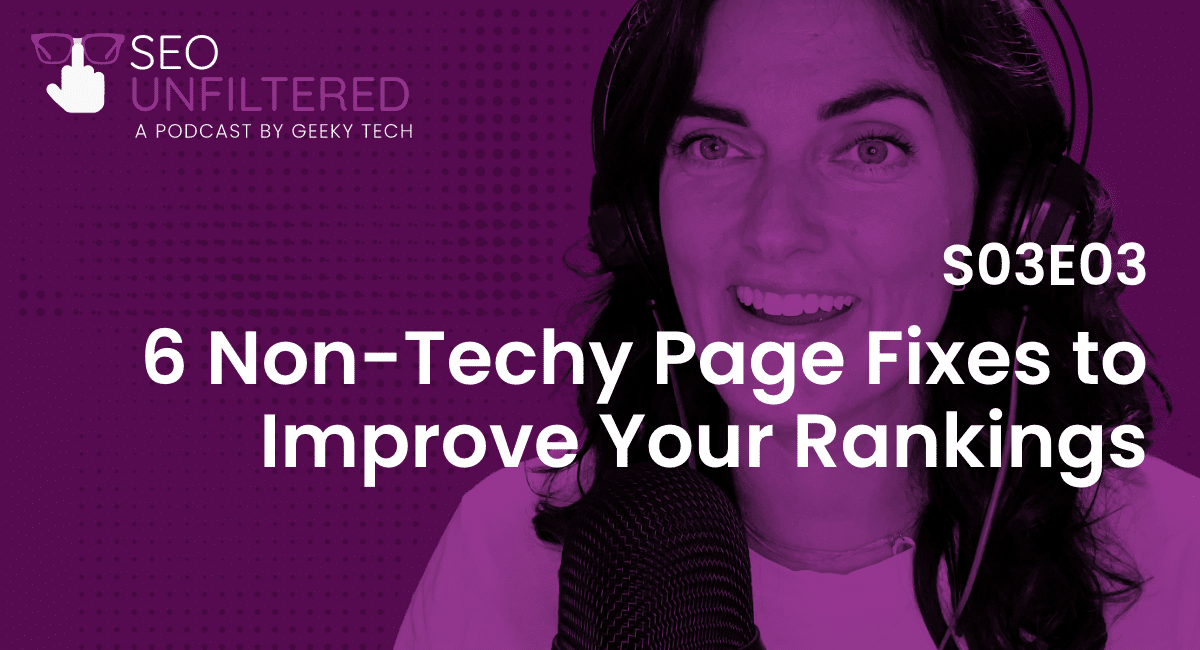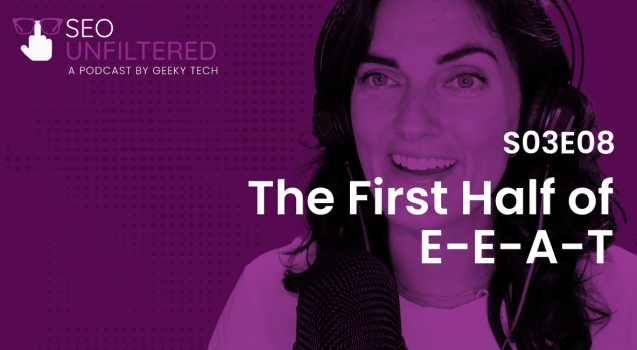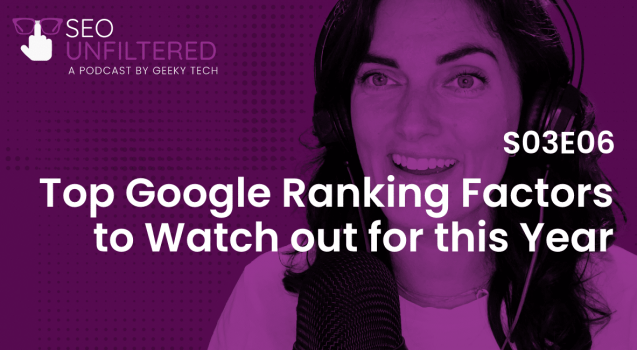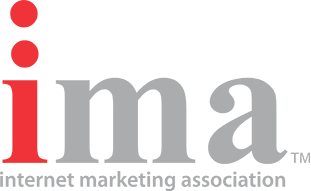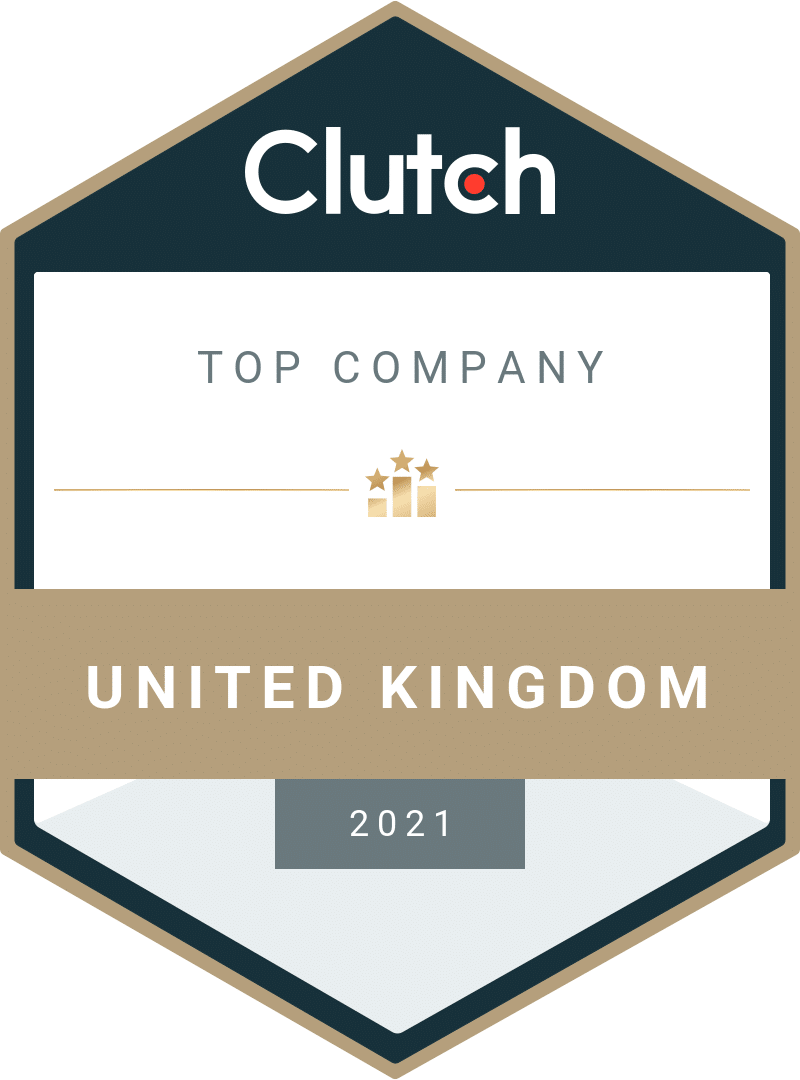Transcript
Genny: Happy November, marketers. Welcome back to another episode of SEO Unfiltered, your one-stop shop for all things SEO and advertising. Back when we first started this show, I think we thought our podcast style was going to be more like Last Podcast on the Left with tons more swearing and colourful jokes, but I think I’ve only lightly cursed like 5 times in the last 2 years. Well that’s all about to change folks because today we’re talking about technical optimisation.
Just kidding. Well, I’m not kidding about the subject being on-page optimisation…we are actually going to get into that today, but I can’t say that it’s a subject worthy of a f-bomb blitz…but we’ll see!
More specifically, we are going to give you quick and easy ways to instantly improve the rankability of your content. And by that, I mean, I will share with you the top 6 quickest page optimisations you can do right now to your existing pages.
And, if you’re one of those marketers who shudders at the sight of code, don’t run away yet, because everything I’m about to tell you is for the technologically lackadaisical.
So, before we get started, go ahead and find your poorest performing page that you want to optimise. And without further ado, here we go:
Number one: Run content through an AI & plagiarism detector
For anyone with a post-secondary education, the accusation of plagiarism is as devastating as a murder conviction…and I’m only being a little bit facetious. But for the sake of SEO, it’s really just another reason your page is ranking so low.
Let’s remember that Google rewards helpful, truthful, and original content with higher rankings, so whether or not your page sounds good, if it’s straight up lifted from another source, that might be why your page is ranking so low.
So, if you get a high plagiarism score, do whatever you need to do to rewrite your passages so they won’t get flagged. While you’re at it, make sure the work itself is linked to a reputable author with a legit bio for extra points.
While plagiarism is a definite no-no, AI-written content is more nuanced. Google no longer has a problem with AI-generated pages, but, like I said, it really only cares that the stuff you’re publishing is helpful, truthful, and original, as evidenced by its aptly named Helpful Content Update.
That being said, it’s a lot harder to convince Google that your content is helpful, truthful, and original if there’s a 95% chance that it was generated by ChatGPT. Now, your company may have a fairly free AI policy, but even if AI content is allowed, it should still meet those helpful content requirements.
How to inject a bit of authority into your content? Well, that’s relatively straightforward. Read through it and make sure it makes sense. Have it verified and fact-checked by an expert and again, you wanna make sure that the content itself is linked to an author page of a legitimate person who can clearly demonstrate their authority on the subject, usually by credential listing.
Number two: Proofread your shit
Yay gratuitous swearing! Okie dokie, you’ve already run your content through a plagiarism and AI-checker, so why do you need to now go back and actually read the thing? Well, for the same reason that human editors still exist. Tools like grammarly are great, don’t get me wrong, and you should be using them. But your common sense and human brain are even better at detecting when something just doesn’t read write.
So, give yourself a few minutes to read your content. It doesn’t matter if you’re the one who wrote it months ago. You’re not the same person you were, and time has reset your eyes. That is to say, this is when you check for spelling, grammar, punctuation, and syntax.
I promise you, you’ll probably notice things that weren’t there before, like maybe your first paragraph is way too keyword dense. Or maybe your AI-written content has actually repeated itself in the last paragraph.
There are tons of reasons to check or proofread your content. So go forth with red pen and be as merciless as your grade 7 French teacher, but bear in mind that if your page is ranking relatively well—which it probably isn’t considering the whole point of this exercise—you want to be a little bit more mindful of not changing too much.
Number three: Make sure your H tags make sense
This is not technical, I promise. If you can change the clock on your microwave, then you can definitely clean up your page’s H tags—”H” for headers.
So, the on-page best practices for H tags are…..
- Let there only be 1 H1 or title tag per page. It’s kinda funny how often people make this mistake. No text should be bigger than the title. This has been a bibliological given since cuneiform was in its heyday, I assume. So please, go back and make sure that the title is the only H1. And of course, while you’re at it, make sure that your title includes your target keyword.
- As for your H2s, H3s and so forth, they should support the main keyword with relevant language or related keywords.
- We do have a resource for this that is super easy to follow, so find that in the episode show notes.
- Number four: Check your links
- Okay kids, I promised not to get too technical, so what I’ll say about your links is super easy but it might really help with your rankings. Basically, all you need to do is click on your links and make sure they go where they’re supposed to go.
- Broken links aren’t great for SEO, so a simple link audit might actually lead to a small boost in rankings. Our rule of thumb is that external links should open to a new tab and internal links should open in the same tab.
- While you’re here, maybe ask yourself if your page has possibly too many links? Are the links relevant to the page and do the anchor texts really represent what they’re linking to? Lastly, do other relevant pages on your site link to this page?
- Use your common sense and adjust accordingly.
- Number five: Run your content through a CRO checklist
- The most basic definition of conversion rate optimisation means to increase the percentage of users taking a desired action. So how do you get more people to contact you, click on your sign up page, join your mailing list, or buy your product?
- Here are a few non-techy ways to boost your CRO:
- Make sure your page design makes sense. You don’t need to be a web designer to know when there’s not enough of a contrast between your link colour and your background or that your paragraphs are too big.
- Make your calls-to-action stand out from the rest of the copy. Your CTA design should be pretty uniform with the rest of the site and you want to try to add one at the top, middle, and bottom of the page. And while we’re on the topic of CTAs, consider the intent of the page before you create the CTA. Not all pages are bottom-of-the-funnel content, so you shouldn’t automatically direct users to a contact form or sales page. Think of the CTA as the logical next step in a buyer’s journey.
- If you do have contact buttons, emails, or phone numbers on your page, make sure they’re clickable.
- And lastly, if your page has a form on it, test it out to see if it works. Make sure your contact form is as short as possible and that all the prompts, buttons, and links work.
Number 6: Optimise your images
Give your page a higher chance of ranking for your target keyword just by changing the file name of your image and adding an alt description. It’s easy peasy.
Best practices for page images are as follows:
- Download the image, rename the file to match the target keyword and then replace what’s on there with the recently renamed version.
- The alt description should accurately describe the image and use the target keyword. Try to keep it less than 130 characters and don’t waste precious characters by starting off with “an image of…”
- Be specific.
I should go into Schema markup and page speed but I did promise only non-technical tips for today’s episode.
Now, once you’ve checked on your page, start these steps all over again with another page. As you can probably guess, there’s a lot more to on-page optimisation than the 6 points I illustrated here. Fortunately for you, we have loads of resources for you to use if you want to improve your page performance, and of course, our door is always open if you have questions about your site health.
That’s it for now. Again, please check out the other resources in the show notes because they’ll give you a more rounded out picture of on-page optimisation.
If you’re interested in learning more about SEO or our techniques and tools, email us at contact@geekytech.co.uk or DM us on LinkedIn, Facebook, or Instagram at geekytechgeeks.
And while you’re there, why not like, follow, subscribe and do all the things that make us feel warm and popular?
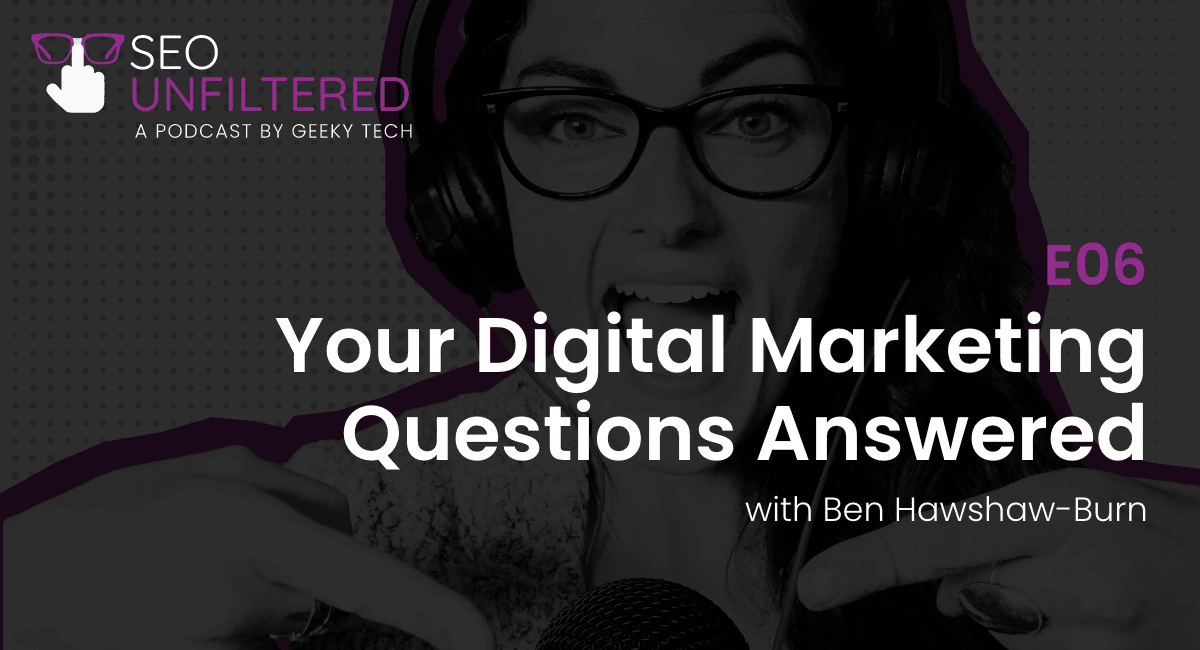
Show Notes
Coding and page design aren’t for everyone, but if you’re a marketer who considers themselves less-than-comfortable taking the wheel on technical page updates, there are still ways that you can improve your page rankings.
In this quick episode, Genny walks listeners through 6 easy page optimisations that anyone can do even if they aren’t part of the web management team.
She also promised everyone that we’d link helpful resources for anyone looking to continue their SEO education, so here you go, as promised:
Suggested Readings
Support your fellow marketing geeks! Follow us on Twitter, Facebook, and Instagram @GeekyTechGeeks for all things SEO and advertising related—and while you’re at it, why not subscribe, like, and follow us on Apple Podcasts, Spotify, Stitcher, or wherever you listen to your favourite shows.
Have any questions you want answered on the show? Email us at contact@geekytech.co.uk.
Thanks for listening 🤓

